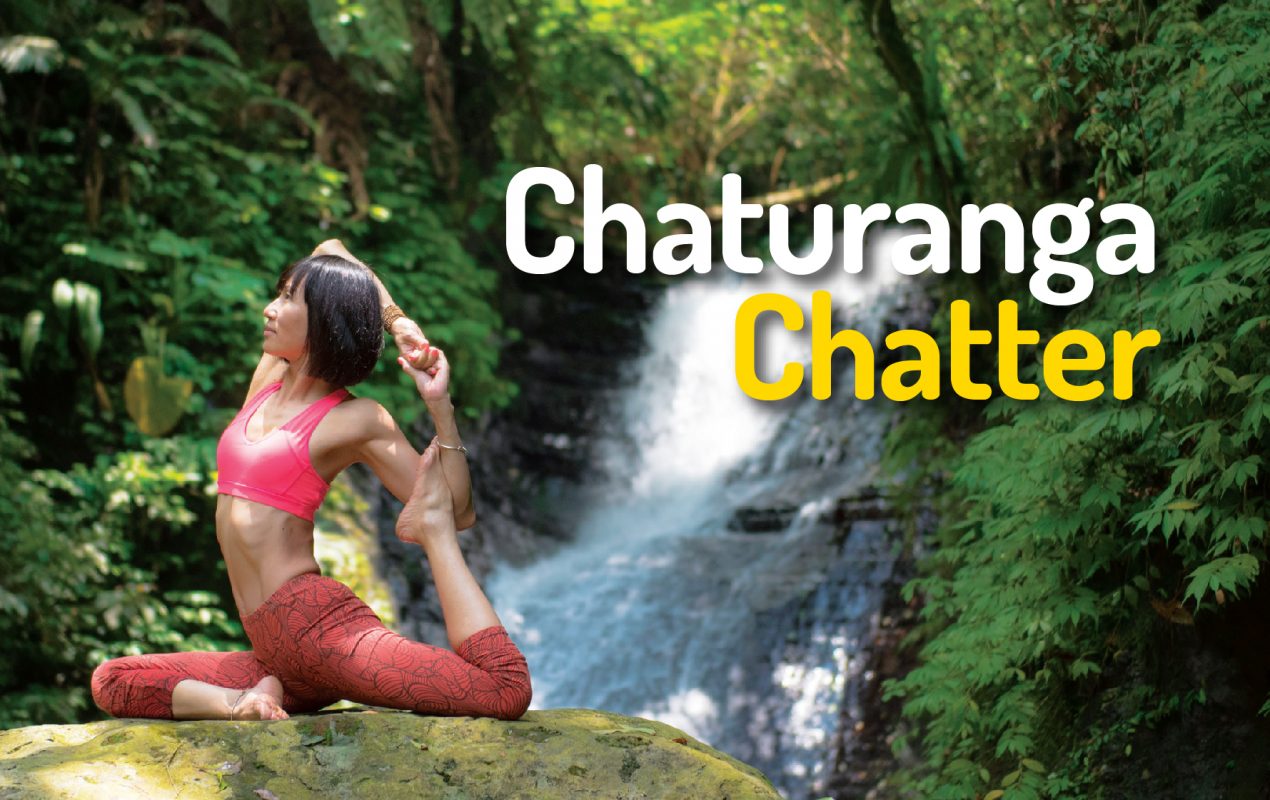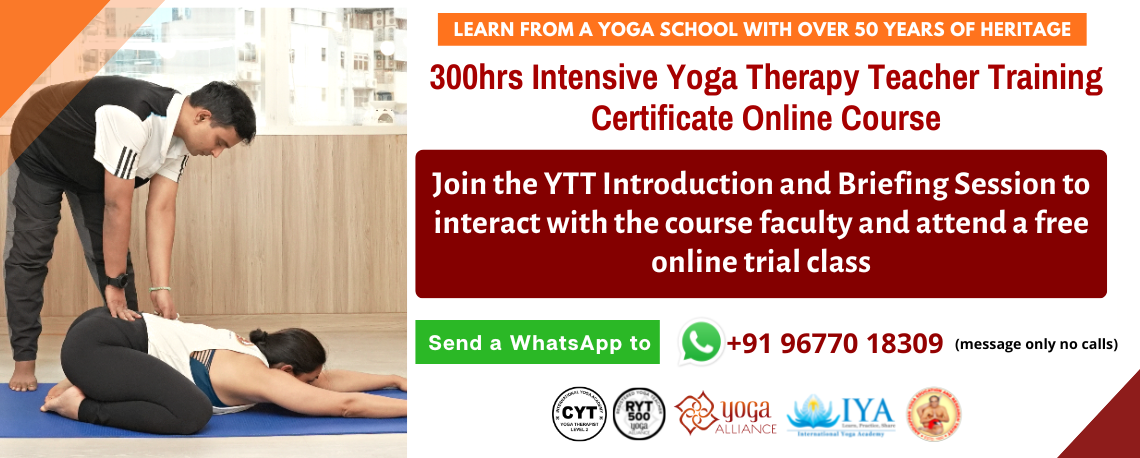There are some constants common to all yoga classes, from beginner instruction to the push and pull of Ashtanga, from the ease of gentle restorative classes to the drumbeat of Bikram. One of them is ‘setting your intention’.
What teachers mean when they say ‘set your intention’ is to practice with a purpose, such as quieting your mind, or developing greater awareness, or simply nailing the poses. It is the same as setting a goal, or defining what it is you want to do so you can do it. Your body, mind, and spirit then become open to change and transformation.
“Every time that I begin a yoga class, I make sure to allow my students time and space to set an intention for their practice,“ said Dana Marie, a CorePower yoga instructor in Illinois.
Intentions are a way to ground the mind, so that when one’s mind wanders there is always the original intent to return to.
“When my mind goes somewhere else, I just remember my intention and I come back,” said Jenniferlyn Chiemingo, Director of Yoga at hauteyoga in Seattle.
A second constant is that the teacher will emphasize, no matter what the rest of the class is doing, that it is up to you to practice in such a way that it benefits you. There is a steady stream of reminders across approaches that it is fundamentally an individual pursuit that moves at an individual pace.
“You create your own experience,” said Greg Gumucio, founder of Yoga to the People. “You are responsible for your body. You are your best teacher.”
What they mean is that regardless of the instruction, and no matter what the rest of the class is doing, what you do in class and what you accomplish is up to you. The outward inflatable slide shape of the yoga pose, or asana, is not what matters so much as what you put into and get out of it.
“The most important thing to remember is that yoga is all about you, it’s your practice and nobody else’s,” said Linda Schaar of Vibrant Life Yoga in Horseheads, NY.
Yoga posture classes are about tuning into your body. They are about taking yourself as deep as you are willing to go, but at the same time being able to stay within the perimeters of what is going on, to be able to recognize and respond to consequences.
“I can always choose to rest in child’s pose, chill out with my legs up the wall, or completely opt out of today’s fancy pose,” said Rebekah Grodky, a university administrator and yoga teacher in Sacramento, California. “Yoga is about self-love and acceptance of where we are right now.”
A third constant is that teachers will talk about going inward, of wedding your breath with your movement. An awareness of one’s breath sets you in the present moment. It is thought that the more you go inward, the more fully you can be present.
What teachers are talking about when they recommend going inward is the fifth aspect of the classical eight-limb system of Patanjali. This fifth limb is known as pratyahara. It is generally thought of as learning to lessen reaction to the distractions of the world around you, although it actually counsels withdrawal from the senses, or introversion.
“The journey of yoga is a couple of hundred miles up a mountain, but it is a millions miles inward,“ said Lilias Folan, best known for her PBS series Lilias! Yoga and You. “There is a lot more to yoga than a ten-minute headstand.”
The last constant of most yoga classes is, as soon as they actually start, after the homilies and theme-setting are over, teachers will do their best to thwart your intention, break your resolve to make the practice your own, and shatter whatever commitment you have made to go inward.
The first thing many yoga teachers do when class starts is plug in their iPods and twirl up their personal play lists, from MC Yogi to Bob Marley, from Krishna Das to Norah Jones. If it’s a Bikram Yoga class, they climb onto their platforms and clear their throats.
When did yoga teachers become DJ’s? Or DI’s as the case might be in the world of Bikram Yoga?
Music seems to have become an integral part of Vinyasa classes, the most popular form of yoga. Sometimes musicians will even play live during classes. It’s entertaining, but it begs the question of what does it have to do with the practice. Does the Billboard Hot 100 enhance breath and awareness? Does it help focus attention on the internal?
Or is it just more noise, just another way of avoiding silence?
“The musical classes, if I wanted to dance, I’d go to Zumba, ” William Auclair of Monterey, California, pointed out.
The next thing yoga teachers do is start talking and not stop until the class is over. If it’s a Bikram Yoga class, they talk twice as loud and twice as fast as other teachers.
Some teachers even talk during Shavasana, or Corpse Pose, in the guise of what they describe as guided meditation. If it’s a Bikram Yoga class, Corpse Pose is the only time teachers don’t talk. They leave the hot room the minute class is over, leaving the sweat lodgers to chill out on their own.
When did the front of the room become a soapbox? Is yoga now a blank page for an editorial? When did yoga teachers start going center stage, like conductors of a symphony orchestra?
Conductors are meant to get their musicians to play all together for an audience. Yoga teachers are supposed to get posture students to pose for themselves.
How much talking should a teacher do during a yoga class?
There is a range of approaches.
Beginner classes are necessarily composed of a steady stream of instruction. Iyengar Yoga, since it focuses on body alignment and is largely about basic principles, involves precise verbal guidance. Bikram Yoga, hell-bent on obedience, is an unchanging and unending litany of commands.
Bikram Choudhury claims his patter is to keep everyone on track, or is it in lockstep? When a Bikram teacher recites the script in an empty hot room, with no one to hear it, was there any yoga to be had?
All yoga involves a certain amount of instruction from the instructors, or teachers, beyond just mechanically sequencing the class. That’s what they’re there for: a paramount concern of yoga exercise classes is that poses be practiced safely.
This is true from beginner classes, where instruction is vital, to intermediate classes, where it is complementary, to Ashtanga and Bikram classes, where it is rote.
Many yoga posture students appreciate the instruction they receive in class.
“If I didn’t want to hear my instructor teach and lead me I wouldn’t bother with a class,” said Amber Rose of Coeur d’ Alene, Idaho. “I want them to talk me through it, to help me reach a deeper level. When I want quiet time I’ll practice at home on my own.
Some wouldn’t have it any other way.
“I love the talk,” said Alicia Allen, an Assistant Professor at University of Minnesota Family Medicine. “Words of encouragement and relevant stories are always helpful to me.”
Others, however, going to class for instruction and physical adjustments, believe there should be some space for them to experience the poses on their own.
“Chit chat and personal stories are very different than cues and directions,“ said Emily Callison Heilbraun of Charleston, South Carolina. “I don’t need to be asked twenty times what my intention was when I started the class.”
Even at big studios, in the middle of big classes, people are often looking for opportunities for stillness and self-observation.
“When people come to do yoga, they come to empty,” said Cyndi Lee, founder of the former OM Yoga in NYC. “If the teacher is filling up too much space with talking, too much music, or too many stimuli, it makes it difficult to empty.”
Yoga teachers need to stop talking so much, according to YogaDork.
“It may be because they love telling stories, or making oodles inflatable water slide of verbal adjustments, or hearing themselves speak yogic poetry, but some yoga teachers just don’t know when to shut up!”
The question has even been raised if teaching poses in class has become secondary to other considerations.
“The instructor offered little to no guidance about how to actually do the poses,” Leslie Munday, a former yoga teacher, wrote on the Recovering Yogi website about an asana class she attended.
“She was practically turning herself blue in the face telling us how to live our lives.”
As a strategy for yoga classes dispensing advice has it problems. Benjamin Franklin observed wise men don’t need advice and fools won’t take it. Everyone else in class, for the most part, only wants to hear it if it agrees with what they were going to do anyway.
Listening to advice is not without its pitfalls, either, including the misstep of ending up making other people’s mistakes.
Although most don’t talk until they’re blue in the face, some teachers talk “way too much,” observed Kimberly Johnson, an international yoga teacher trainer based in Southern California.
“A lot of teachers say that their goal is for students to feel ‘better’ or ‘happier’ after class. Where it gets tricky though is at what point in your teaching trajectory do you deem yourself ready to teach philosophy or wax poetic?”
But, ready-made knowledge isn’t the role of yoga, at least not beyond beginner classes. It is rather a practice whose dynamic is fostering conditions for invention and re-invention. The best teachers aren’t the ones who try to tell you everything, but the ones who inspire you to teach yourself.
“You have to grow through the inside out,” said Swami Vivekananda, a key figure in the introduction of yoga to the Western world. “There is no other teacher but your own soul.”
Silence and speech are like yin and yang. Each depends on the other. Speech explains the mystery and silence brings us closer to it.
Who listens to anyone who yammers on and on about the ‘deeper lessons’ of the practice? Who can focus on the intricacies of headstand when Elton John, the Liberace of my generation, is on the play list, hamming it up about his Rocket Man?
Yoga isn’t about texting, tweeting, and talking, talking, talking. It’s about stepping back, absorbing silence, and being in the moment.
“It is to quiet the fluctuations of the mind,” said Patanjali about the purpose of yoga.
That can be hard to do when your teacher is yakking it up.
“When we’re constantly chattering, it’s a distraction and brings students into their heads,” said Karen Fabian of Bare Bones Yoga in Boston. “A great way to create presence is to allow for silence.”
Although some teachers talk too much, many of them, based on my own admittedly unscientific tally, talk just enough, sprinkling advice, observations, and encouragement in with instruction.
There are some who might even not talk enough.
A few years ago I was in a workshop given by Naime Jezzeny, a nationally renowned teacher from New Jersey who specializes in biomechanics and its application to yoga. We were all in Bridge Pose when Mr. Jezzeny walked over to our side of the large room. After looking over a few other poses and briefly commenting on them, he stopped at my mat.
He looked my pose up and down, chewed on his index finger, and said, “Hmmm…”
Then he walked away to the next mat.
I’ve always wondered what he meant by what he said. Or meant by what he didn’t say.
To read the full article please download our Asana Journal App or purchase Issue 163 July 2016.




















 Other
Other